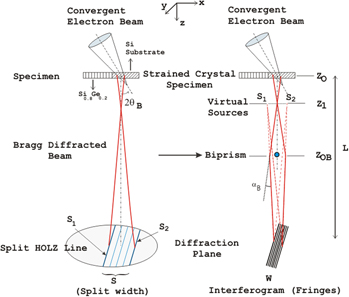JMR Early Career Scholars in Materials Science Annual Issue: Reviews
30 years of advances in functionalization of carbon nanomaterials for biomedical applications: a practical review
-
- Published online by Cambridge University Press:
- 19 December 2016, pp. 107-127
-
- Article
-
- You have access
- Open access
- HTML
- Export citation
Articles
Study of orientation relationship between Al matrix and several typical inclusions in Al alloy by edge-to-edge matching model
-
- Published online by Cambridge University Press:
- 09 April 2017, pp. 2092-2099
-
- Article
- Export citation
Thermal behavior and formation mechanism of a typical micro-scale node-structure during selective laser melting of Ti-based porous structure
-
- Published online by Cambridge University Press:
- 18 April 2017, pp. 1506-1516
-
- Article
- Export citation
Influence of fiber orientation on the tribological properties of unidirectional carbon fiber reinforced epoxy composites corroded by 10 wt% sulfuric acid solution
-
- Published online by Cambridge University Press:
- 02 February 2017, pp. 801-809
-
- Article
- Export citation
Aberration-corrected self-interference of split higher order Laue zone line for measuring the z-dependent strain profile
-
- Published online by Cambridge University Press:
- 16 January 2017, pp. 996-1008
-
- Article
- Export citation
Review
An examination of the superplastic characteristics of Al–Mg–Sc alloys after processing
-
- Published online by Cambridge University Press:
- 25 July 2017, pp. 4541-4553
-
- Article
- Export citation
Invited Paper
Instantaneous photoinitiated synthesis and rapid pulsed photothermal treatment of three-dimensional nanostructured TiO2 thin films through pulsed light irradiation
-
- Published online by Cambridge University Press:
- 24 April 2017, pp. 1701-1709
-
- Article
- Export citation
Invited Feature Paper
Activation of PVDF membranes through facile hydroxylation of the polymeric dope
-
- Published online by Cambridge University Press:
- 30 October 2017, pp. 4219-4231
-
- Article
- Export citation
Articles
The mechanical properties of as-grown noncubic organic molecular crystals assessed by nanoindentation
-
- Published online by Cambridge University Press:
- 19 June 2017, pp. 2728-2737
-
- Article
- Export citation
Tribological properties of lead-free Cu–FeS composites under dry sliding condition
-
- Published online by Cambridge University Press:
- 07 November 2016, pp. 354-362
-
- Article
- Export citation
Creation and investigation of chitin/HA double-layer coatings on AZ91 magnesium alloy by dipping method
-
- Published online by Cambridge University Press:
- 13 June 2017, pp. 2532-2541
-
- Article
- Export citation
An experimental study of influence of wire electro discharge machining parameters on surface integrity of TiNiCo shape memory alloy
-
- Published online by Cambridge University Press:
- 20 April 2017, pp. 3100-3108
-
- Article
- Export citation
Invited Articles
Optical biosensors utilizing graphene and functional DNA molecules
-
- Published online by Cambridge University Press:
- 03 April 2017, pp. 2973-2983
-
- Article
- Export citation
Invited Paper
An optical dustbin made by the subwavelength-induced super-black carbon aerogels
-
- Published online by Cambridge University Press:
- 05 September 2017, pp. 3524-3531
-
- Article
- Export citation
Invited Articles
Manufacturing of porous mullite fiber compacts by uniaxial hot pressing of semicrystalline MAFTEC® MLS-2 organic bound mats
-
- Published online by Cambridge University Press:
- 29 June 2017, pp. 3294-3301
-
- Article
- Export citation
Review
Effect of severe plastic deformation on tensile and fatigue properties of fine-grained magnesium alloy ZK60
-
- Published online by Cambridge University Press:
- 24 July 2017, pp. 4362-4374
-
- Article
- Export citation
Articles
Synthesis, microstructure and mechanical properties of (Ti,Mo)Al/Al2O3 in situ composites by reactive hot pressing
-
- Published online by Cambridge University Press:
- 27 February 2017, pp. 1129-1137
-
- Article
- Export citation
Mechanical behavior and microstructure of low-carbon steel undergoing low-frequency vibration-assisted tensile deformation
-
- Published online by Cambridge University Press:
- 20 September 2017, pp. 3885-3893
-
- Article
- Export citation
Article
Toward a better understanding of conjugated polymer blends with non-spherical small molecules: coupling of molecular structure to polymer chain microstructure
-
- Published online by Cambridge University Press:
- 05 January 2017, pp. 1935-1945
-
- Article
- Export citation
Invited Reviews
New epitaxy paradigm in epitaxial self-assembled oxide vertically aligned nanocomposite thin films
-
- Published online by Cambridge University Press:
- 24 July 2017, pp. 4054-4066
-
- Article
- Export citation




















